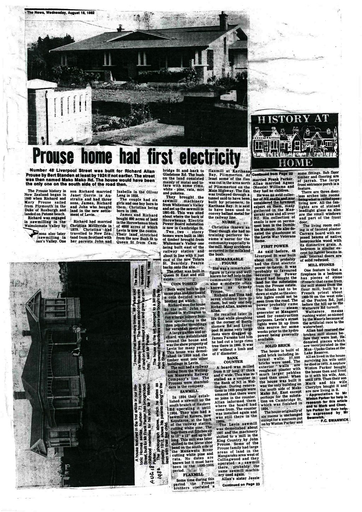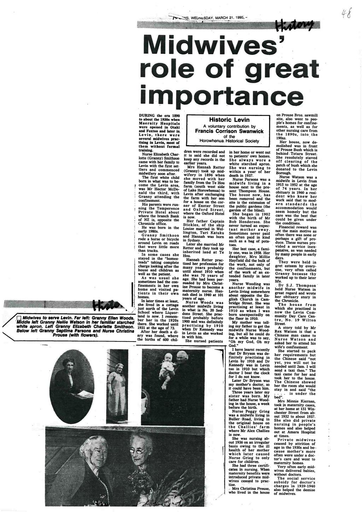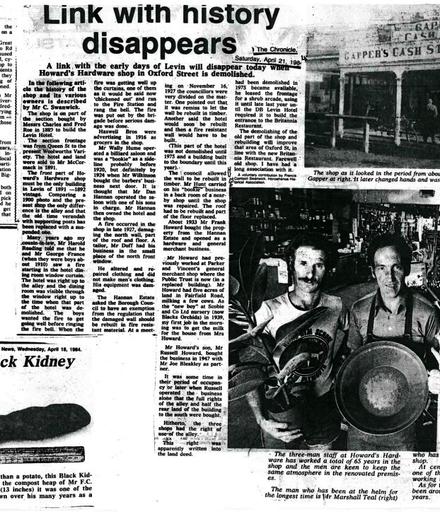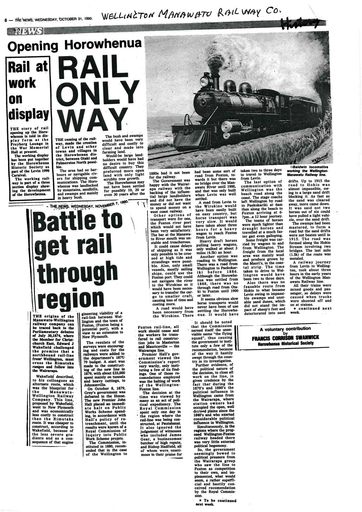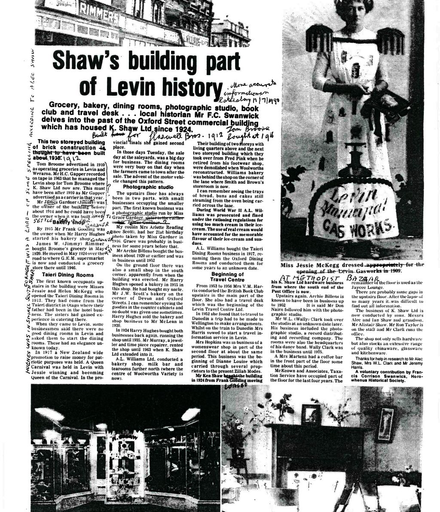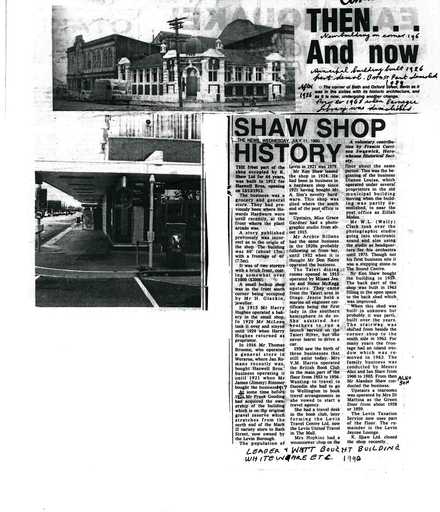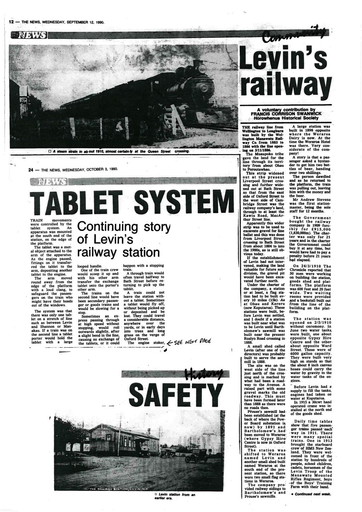 In 1898 he was travelling from Wellington with the intention of buying land in the Manawatu area. He noticed the prolific growth of the cocksfoot grass at the Levin Railway Station, so he decided to buy land in the Levin area.
In 1898 he was travelling from Wellington with the intention of buying land in the Manawatu area. He noticed the prolific growth of the cocksfoot grass at the Levin Railway Station, so he decided to buy land in the Levin area.
Selling cocksfoot seed was one the earliest forms of income for the pioneers. There was not much demand for dairy produce. Cocksfoot seed could be sown between the stumps and logs and give a double bonus of grass for grazing and grass seed for sale.
I can remember people, especially pensioners, in their spare time cutting cocksfoot seed and threshing the seed by hand for probably six pennies (5 cents) per pound.
At first Henry and Louise France and family lived in a house in Kawiu Road. A Mr John Howell had carried the timber from Bartholomew’s sawmill near the now Roslyn Road.
When he reached the hollow in Kawiu Road he thought it was far enough to carry timber on his shoulder so he decided to build the house there.
Sign of affluence
Henry France acquired a small farm in the King’s Drive area and built his own house there. This originally had a tower at one corner with a dome on top. Domes and pepper pots were popular in about the 1900 era, obviously a sign of affluence of the owner. The dome of 20A was removed at least 15 years ago.
At some early stage probably before about 1915 Henry subdivided the land in the area. He named the road King’s Drive as he said the area was fit for a king to live in.
Henry and his wife Louise sold the property in 1920 to Joe Lemmon and went to live in Plimmerton.
Their son George was three years old when the family came to Levin and grew up in the home. The present owner Mr Gosden remembers George telling him that when young he used to catch eels and trout in the large water race that ran along King’s Drive.
George France was apprenticed to George Douglas, a leading builder of the 1900s and onwards period, as a carpenter.
A story my cousin Harold Reading told me was that as lads he and George were once near the alleyway between what is now Howard’s Hardware shop and the old Levin Hotel. They saw curtains burning in the window of the dining room obviously lit by a candle on the windowsill. They agreed to let the fire get to a decent size before calling the Fire Brigade. However, one of the lads “chickened out” at it would be called now, and ran along to the Fire Station and rang the fire bell. The fire did not become serious. This would have been pre-World War I.
George served in the army during WWI. He was in the occupying NZ Forces which took Samoa from the German administration. He served in Gallipoli and later in France where he received a blighty and was invalided to England.
After returning home he was attracted to Miss Beryl Kate Remington who assisted her father in his chemist shop. George was rather shy and so to see her he used to go into the shop and buy a cake of soap and so amassed a large amount of soap.
Beryl apparently thought a large amount of soap and a loving husband would be nice so the couple were married about 1920.
George built his own house on the corner of King’s Drive and Tiro Tiro Road and the family lived in it all their lives. George became a builder on his own account later.
About the early 1930s he went into partnership with Mr Joe Harvey who had his joinery factory about where the eastern entrance to The Mall is now. The firm was the foremost builders of Levin until about 1955.
They built many of the large buildings of Levin and district including the Horowhenua Power Board, the NIMU and the dairy factory buildings. They built the first state houses in Princess St, probably about 1937 or 1938 and more state houses in the Bristol St – Essex St area in 1938-39.
Ardent Cricketer
George France was an ardent cricketer all his life playing for the Weraroa Club most of the time. He was a good average batsman and had played as a representative of the Horowhenua team. He was very prominent in administration in later life and as a colleague told me recently, did a tremendous amount of good for cricket. The cricket pavilion at the Weraroa Recreation Ground, The George France Memorial Pavilion is named in his memory.
Cello Player
Beryl France was an accomplished cello player. She played in the orchestra of the De Luxe (now Regent) in the silent picture era and in a theatre orchestra in Palmerston North.
The orchestra then in Levin consisted of six players, at least on Saturdays or other special nights. George France died in 1977, his wife Beryl having pre-deceased him.
After Joe Lemmon sold the house at 20A King’s Drive, a family named O’Sullivan occupied it, then a Williams family and a Gedge family.
Mr Gilbert Glover and family occupied the house until 1967 when Mr S.G. Gosden and Mrs E.R. Gosden bought it and are now living in it with their family.
The house is well back from the road and, though not fronted by flats, they front what was a section at the side of the house.
(Thanks to Mr Gosden, Miss Eileen Ryder and Mrs Gwitha de Castro for help in inquiries into research).



